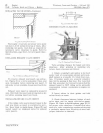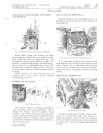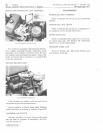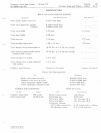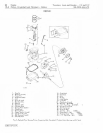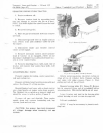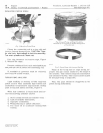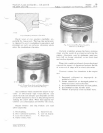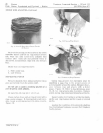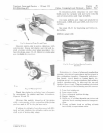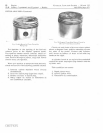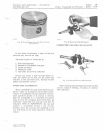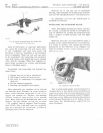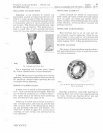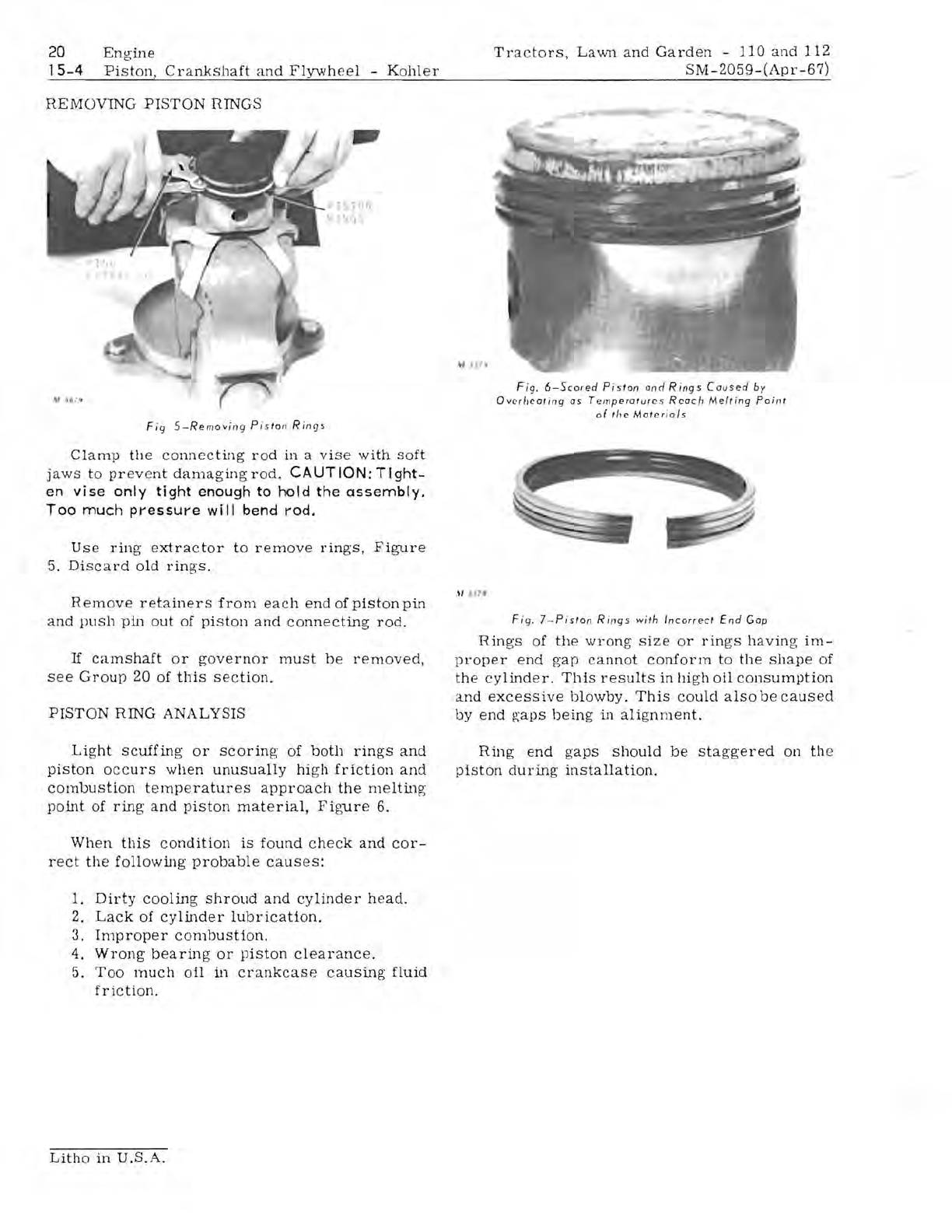
20
Eng'ine
Tr
actors,
La\lJll
and
Garden
-
110
and
112
15-4
Piston,
Crankshaft
and
Flywheel
-
Kohler
SM
-2059-(Apr-67)
REMOVING
PISTON
nINGS
Fi
g
5-Removing
Pistor!
Ri
ngs
Clamp
the
connecting
rod
in a
vise
with
soft
ja
ws
to
prevent
damagin
g
rod,
CAUTION:
TIght-
en
vise
only
tight
enough
to
hold
the
assembly.
Too
much
pressure
wi II bend
rod.
Us
e
ring
extractor
to
remove
rings,
Figure
5,
Discard
old
rings.
Remove
retainers
from
each
end
of
piston
pin
and
push
pin
out
of
piston
and
connec
ting
rod.
If
camshaft
or
governor
must
be
removed,
see
Group
20
of
this
section.
PISTON
RING
ANALYSIS
Light
scuffing
or
scorin
g
of
both
rings
and
piston
occurs
when
unusually
hi
gh
friction
and
combustion
temperatures
approach
the
melting
point
of
ring
and
piston
material,
Figure
6.
When
this
condition
is
found
check
and
cor-
rect
the
following
probable
causes:
1.
Dirty
cooling
shroud
and
cylinder
head.
2.
Lack
of
cylinder
lubric
a
tion.
3.
Improper
combustion.
4.
Wrong
bearing
or
piston
clearance.
5.
Too
much
oil
in
crankcase
caus
ing
fluid
friction.
Fig.
6-Scored
Piston
and
R
ings
Caused
by
Ovc·ri,c,ating
as
Te
mperatu,e
s
Rcac!.
Melfing
Point
of
ti,e
Materiols
.
\1
HIt
Fi
g.
7-Piston
Rings
with
Inc
orrect
End
Gap
Rings
of
the
wro
ng
size
or
rin
gs
having
im-
proper
end
gap
cannot
conform
to
the
shape
of
the
cylin
de
r.
This
result
s in
high
oil
consumption
and
excessive
blowby.
This
co
uld
also
be
caused
by
end
f',;aps
being
in
alignment.
Ring
end
gaps
should
be
staggered
on
th
e
piston
during
installation.
Litho
in
U.S.A.



